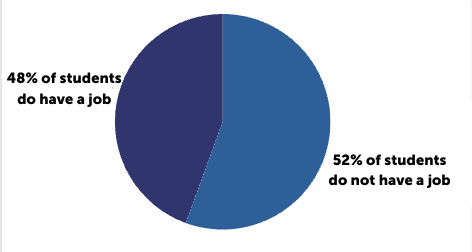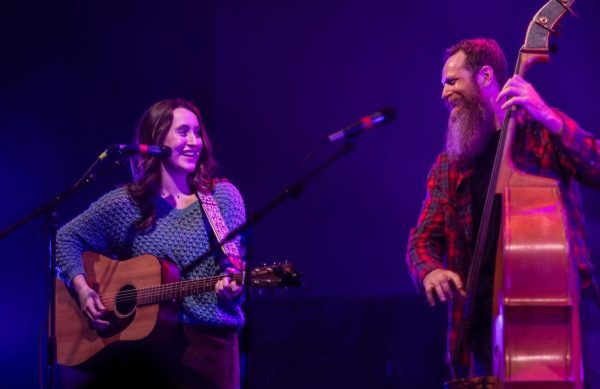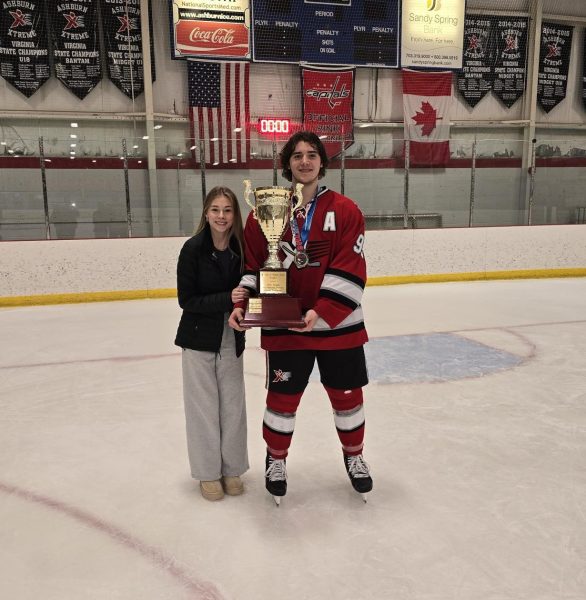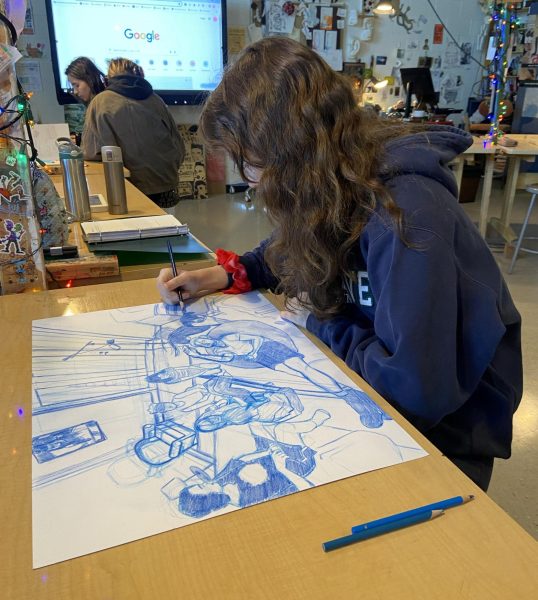The History of Halloween: From Potatoes to Pumpkins
Many Americans think of Halloween as a holiday for candy, costumes, and carving pumpkins, but the holiday goes so much deeper than that, both commercially and culturally. Halloween has gotten consistently more popular since the beginning of the 20th century, driving in a whopping revenue of 10.6 billion dollars with over 65% of Americans taking part in 2021 according to Statistica.com. But apart from scary stories and horror movies, what really is Halloween and why do we celebrate a holiday dedicated to treats and tricks?
The Halloween we know today was originally known as the ancient Celtic festival of Samhain, which was actually a celebration of the coming new year. Samhain translates to “summer’s end” and marks the end of the harvest season and the beginning of winter.
Besides acting as a warning sign for the oncoming winter, Samhain’s location between the fall equinox and winter solstice plays a crucial role in its importance and traditions. The Gaelic calendar divided the year into two halves: light and dark. The “light season” (spring and summer) was associated with life, whereas the “dark season” (fall and winter) were associated with death. Samhain literally represents the fusion of the living and the dead.
Observance included stocking up supplies for winter, slaughtering cattle, and holding “bone fires” in which they disposed of the extra bones. This is where the word “bonfire” came from. Communities would band together to feast, drink, and celebrate while in preparation for the upcoming frost, aware that some unexpected visitors might be making an appearance.
Celts believed that the “veil” between the living and the dead became thinner during this time, and that recently passed spirits could visit the living world and interact with humans. Elves, fairies, and other mythical creatures could also make an appearance. Departed loved ones were embraced, and families would commonly set out the person’s favorite food as a welcoming.
Loved ones were not the only spirits expected. Some ghosts returned to the living world for revenge or to cause harm to someone who might have wronged them. To deceive the spirits, people would rub ashes from the bonfires on their faces. This tradition later developed into wearing masks and eventually costumes like the ones we see today. Celts also carved root vegetables like potatoes, beets, and pumpkins into scary faces to achieve the same effect.

Not much is known about the traditional folklore of Samhain because of the Catholic Church, who incorporated religious factors into the holiday when Catholicism became popular in Ireland during the 5th century. The only records we have of Samhain’s history relies on Irish monks who recorded them prior to Catholicism.
Pope Boniface IV designated November 1 to be All Saints Day instead of Samhain; and the day was dedicated to vigil and prayer instead of traditions associated with Paganism. The night before Samhain, now known as All Hallows Eve and later Halloween, was celebrated instead and kept most of its Celtic influence and traditions intact.
Even though Samhain had been “replaced,” many of its older traditions were melded into All Saints Day. Bonfires were lit to honor Christian heroes and the practice of “souling”- going door to door asking for “soul cakes” in return for prayers- had become popular with the poor. Souling continued in England even after the Protestant Reformation, and was practiced by both Catholics and Protestants.
While the conflict between Catholics and Protestants increased, so did Halloween’s development. The Gunpowder Plot, a failed assassination attempt by Guy Faukes on King James I of Britain, was celebrated by English Protestants as triumph over the Catholics. Guy Fawkes Day later became its own holiday, observed on November 5th, and involved festivities relating to anti-Catholicism. Bonfires were lit and people feasted while vandalizing figures of the Pope as well as Catholic homes and businesses. Children would go house to house wearing masks and pushing a model of Guy Faukes in a wheelbarrow to beg for candy, often threatening to deface the person’s property if they were refused.
The holiday was soon brought to America by English Puritan settlers, but Halloween’s popularity was truly set off by the Irish diaspora during the 19th and 20th centuries. The Great Potato Famine brought millions of Irish immigrants to the United States, and they took their traditions with them. By this point, Guy Fawkes Day was not celebrated in the U.S. anymore, but many of its folk traditions attached themselves to Halloween- including vandalism.
In 1912, a woman named Elizabeth Krebs got tired of her small Kansas town being vandalized every Halloween. In an effort to stop this, she threw a party in the hopes that the destruction would end. It didn’t, so she tried again the next year; only bigger. Krebs invited the entire town, held a costume contest, organized a parade, and brought in a band. This time, her plan worked and there was no disruption to the town. News of her successful endeavor spread and Halloween parties became popular throughout the nation.
Your donation will support the student journalists of Woodgrove High School. Your contribution will allow us to purchase equipment, attend conferences, and cover our annual printing and website hosting costs.
















